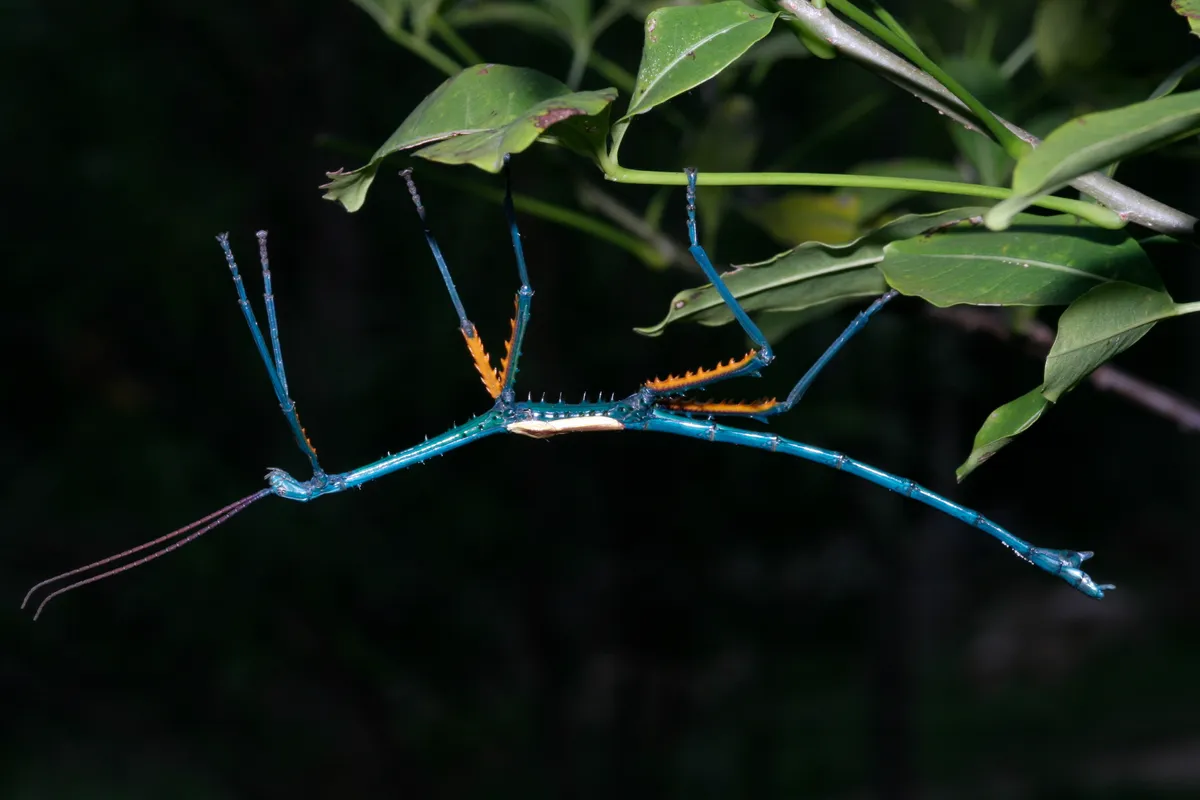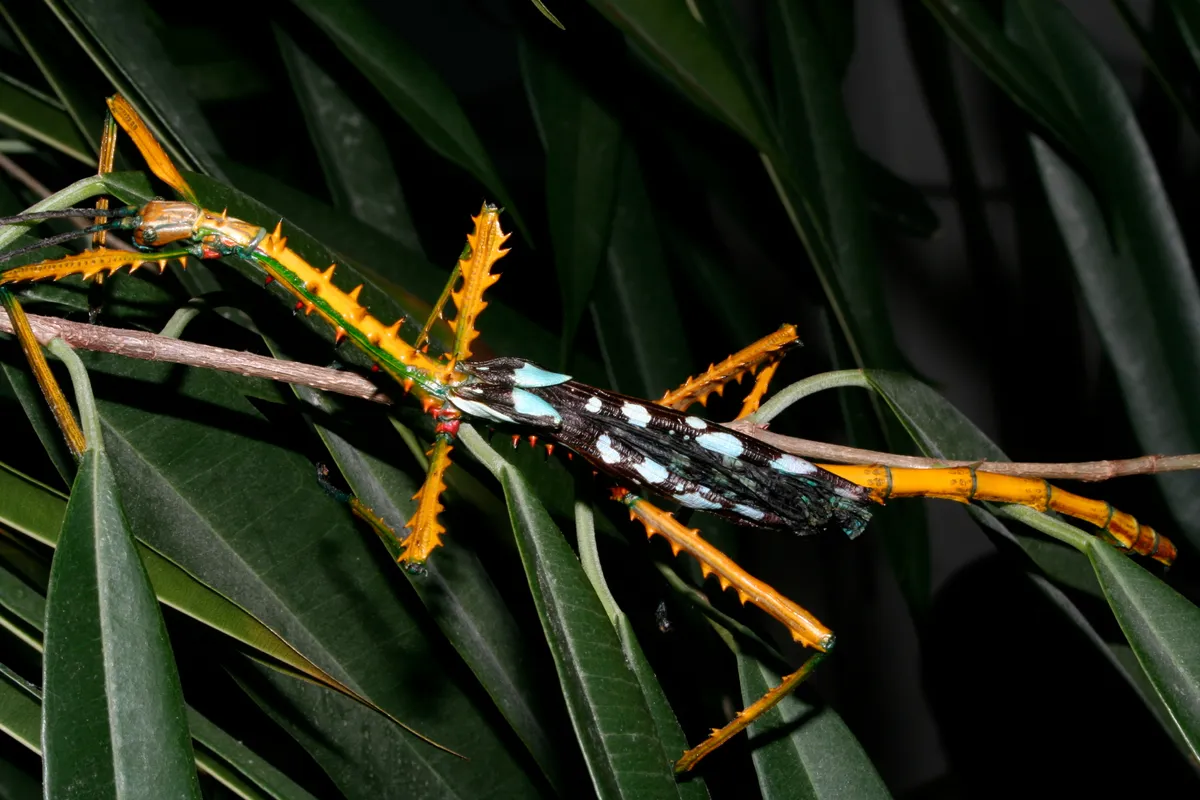The discovery of the new giant stick insect species is most interesting due to the bright colouration of the males, which can be dazzling blue or multicoloured.
“Nearly all of the 3,000-plus known species of stick insects try to be inconspicuous and just look like twigs,” says author of the report Dr Sven Bradler from the University of Göttingen.
“There are very few very large exceptions and we have just discovered a couple more of them.”
The authors examined specimens that they had previously identified as odd-looking examples of other species, but genetic testing has confirmed that they are in fact two new species. This reclassification places members of this group of species as close evolutionary relatives to other Madagascan stick insects.

Now the researchers are pondering what the advantage of the males’ bright colouration is, as it would seem to expose them to predators.
They do not gain their colour until they attempt to mate, which would suggest it helps attract a partner, however it is hard to believe the males could find a female before being eaten.
It could be that their bright colours are also acting as a warning sign to predators and may hint at their toxicity.

“All stick insects have neck glands with repellent substances, and these are typically well-developed in brightly coloured species,” says first author Dr Frank Glaw from the Bavarian State Collection of Zoology.
“Alternatively, like the Madagascan frogs, some giant stick insects may have developed the ability to accumulate toxins from their food.”
The authors now aim to test these hypotheses to determine the function of the males’ bright colouration, as well as its source.
Whatever the reason behind it, the splendid colour of the male giant stick insects could make them a strong flagship species to promote the unique biodiversity of Madagascar and highlight the need for its protection.
Read the full paper in Frontiers in Ecology and Evolution.
